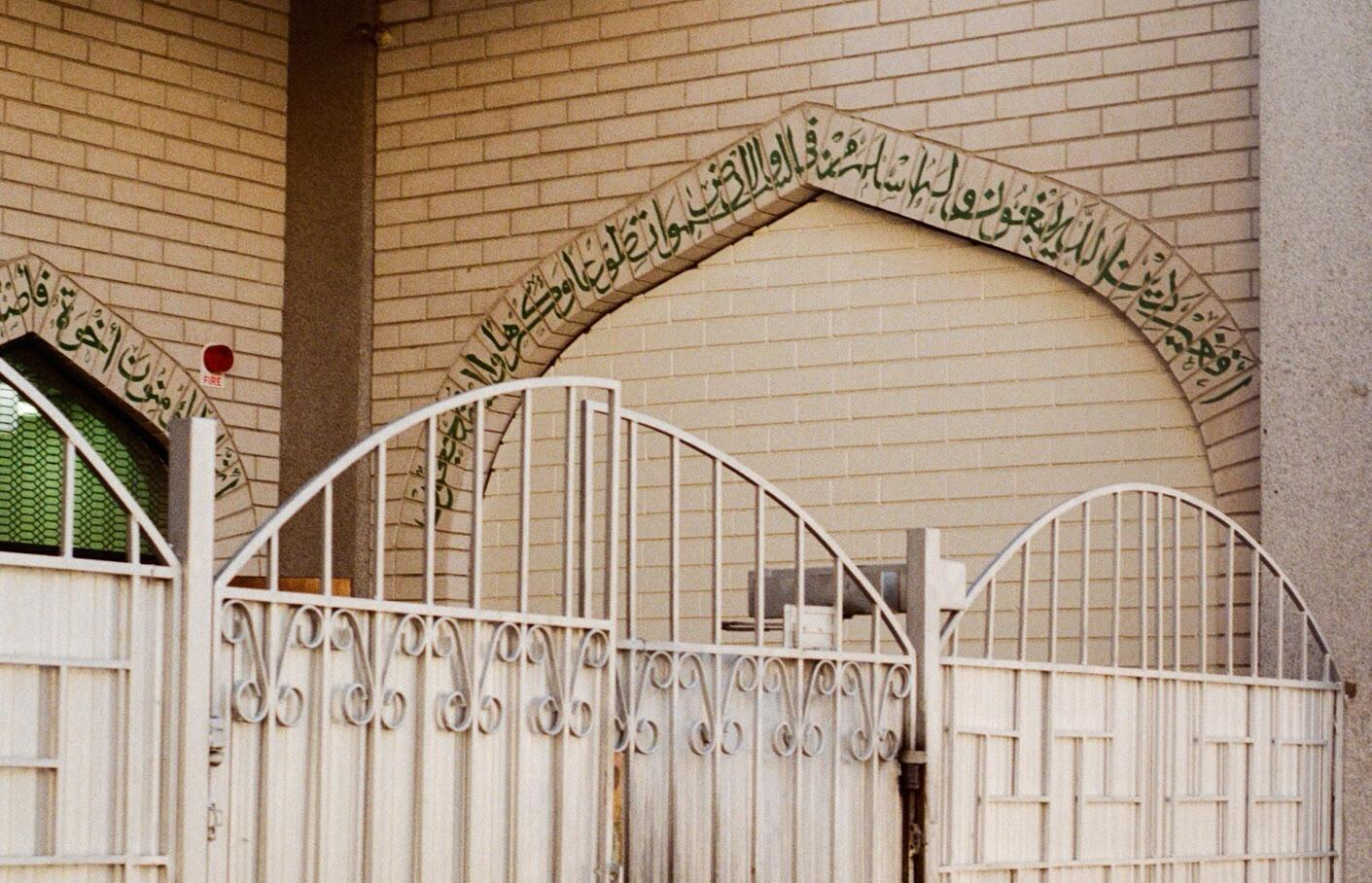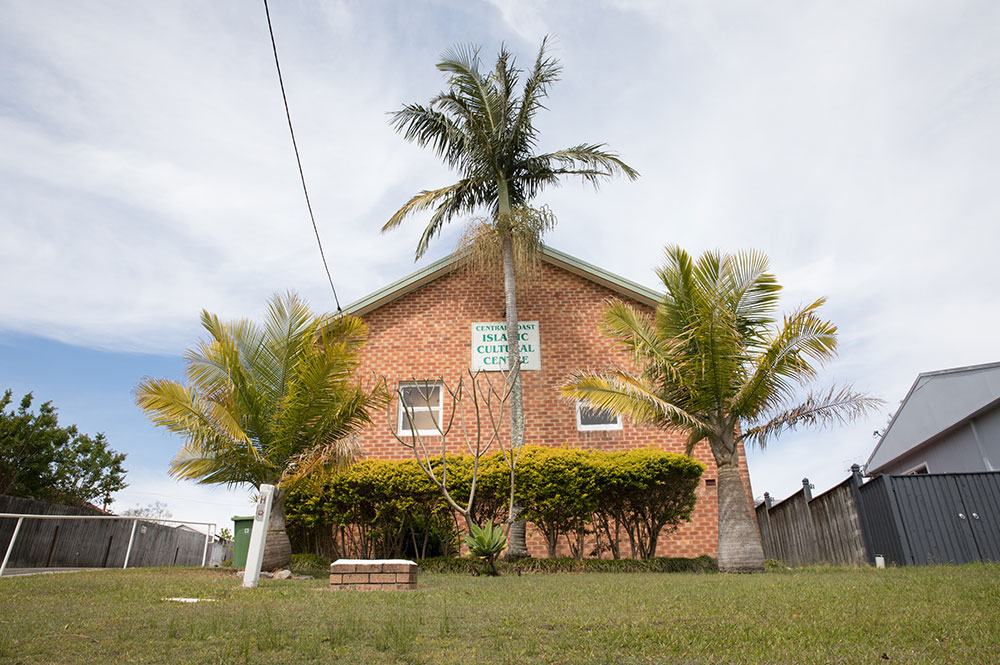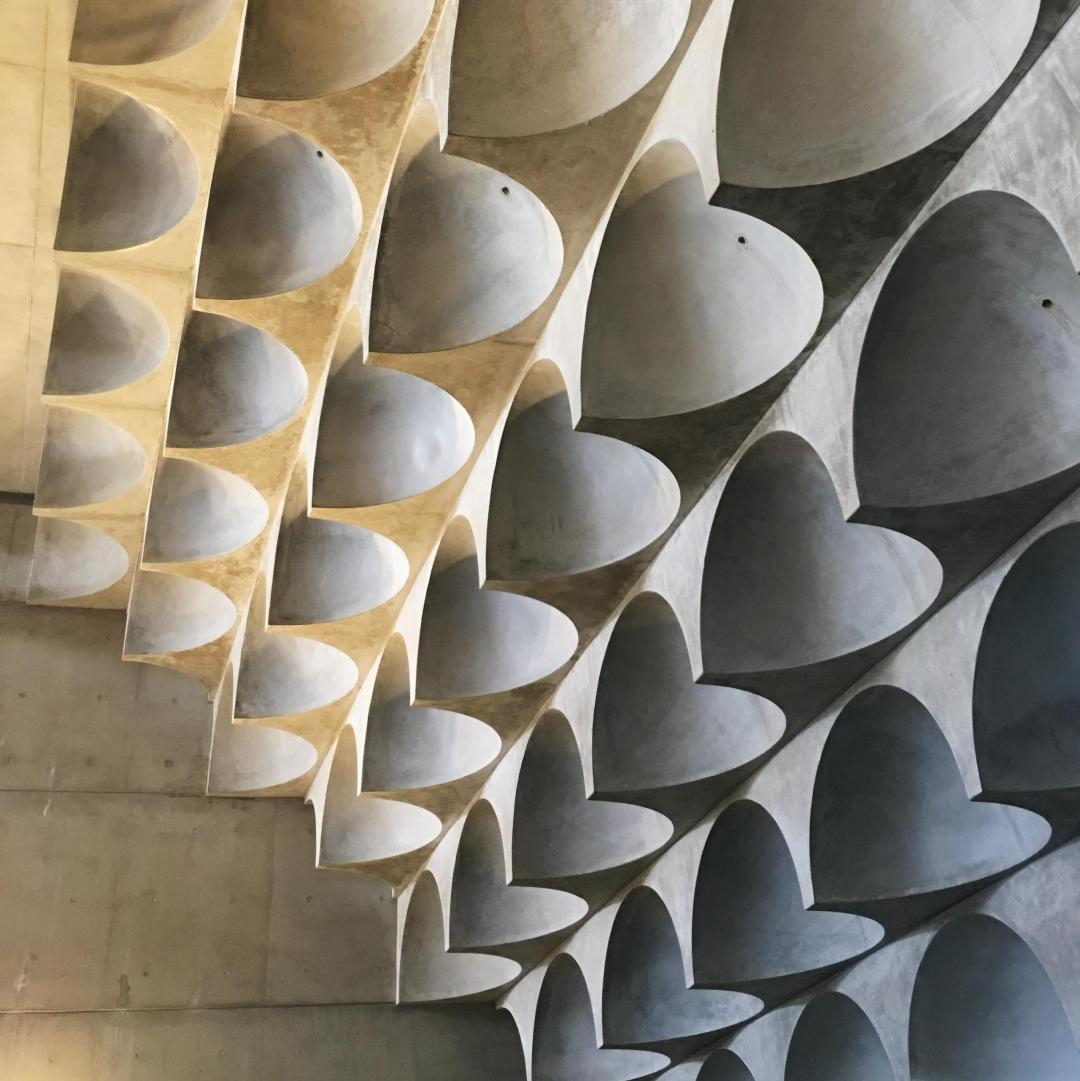Re-Imagining Mosques - Ryan Wazir
Byera Hadley Travelling Scholar, Ryan Wazir, sheds light on his current research that explores the opportunity for architecture and urban design to re-imagine contemporary design approaches to mosques, and continues an important conversation on how these disciplines can foster inclusivity, interfaith and intercultural dialogue.

“We do not want an ugly big white pastry in our neighbourhood, as you sometimes see when they build a new mosque. Our mosque will be completely in the style of the ‘Amsterdam School’’, such that it fits perfectly in the neighbourhood and becomes a real Dutch mosque.” Dutch-Turkish Muslim community leaders who commissioned the West Mosque in Amsterdam, The Netherlands.
“If you are Muslim and you want a mosque, go back to the Middle East. This is Australia.” Anti-mosque protester, Bendigo, Australia.
The Intersection of Inclusive Architecture and Urban Design
The above quotes speak to some of the many architectural, social and political tensions that the spectre of a mosque and minarets rising above urban landscapes, provoke in both Muslims and some non-Muslims alike. As the first quote reveals, a desire exists by some Muslims to re-imagine how a mosque is designed and integrated into the existing built and urban fabric. In contrast, the comment by the Bendigo protestor speaks to a concern about a mosque existing in the first place in a country like Australia, and the notion that a mosque symbolises the unknown, the ‘Other’. In effect, mosques have come to symbolise an architectural ’Other’.
The broad aim of my project is to explore how the intersection of architecture and urban design offers an opportunity to not only re-imagine contemporary design approaches to mosques, but also contribute to the continuing conversation on how these disciplines can foster inclusivity, interfaith and intercultural dialogue.
My intention is also to contribute to the ongoing conversation on how contemporary Muslim identity is experienced and represented. While my research is focussed on representation within the built environment and urban spaces, these themes of identity, displacement, marginalisation and inclusion are also being explored by various Muslim artists, and particularly by various local contemporary Australian Muslim artists.
Reimagining architectural design principles
My research has been investigating how architects are re-imagining the design principles of mosques and re-evaluating the relationship between the context and traditional signifiers of an Islamic building - the dome and the minaret - to foster a sense of inclusivity and openness, as well as being contextual and site specific. Architecture and urban design have an intersecting role to play in re-imagining mosques and exploring the possibilities for community and inclusion.
By visiting mosques and interviewing architects, I have been exploring the changing architectural language of the mosque, as well as the urban design principles that shape the mosque and context. My research is asking questions about traditional and contemporary Islamic architectural language and exploring how contemporary mosques foster an 'openness’, a dialogue, with the wider community. A key element to fostering a sense of openness is community consultation, the lack of which has contributed to broader community opposition to mosques.
Urban design and planning
In Australia mosques have either sparked opposition, or have been warmly welcomed by local communities and councils. A trip to Camden on the outskirts of Sydney reminds us of a Mosque that was never built and polarised the local community. The regional Victorian town of Bendigo has become synonymous with protest against a mosque. And, for me, personally growing up as a young Muslim person in Sydney, visiting Lakemba evokes memories of community gatherings on a cordoned off street during the bi-annual Eid festivals.
During my Byera research studies, I plan on interviewing urban designers and planners in the equivalent “local council” context in the cities I will be visiting. I’m particularly interested in cities that have an urban design strategy that might be anchored on inclusivity and provide a particular path for mosques through the planning process. What drivers affect a proposal for a new mosque to be approved, while others are not so successful?
While this may not be the case in all cities, it is crucial in places like New York and London where there are active plans to engage communities and explore urban planning framework. New York’s Department of City Planning, for example, has a “City wide” plan in place, looking at urban design principles to guide the future of the city’s five boroughs.
The Muslim diaspora and the construction of contemporary mosques
As my research develops and my fieldwork continues, themes are beginning to emerge. The cities I am visiting are within regions where there is a large population of the Muslim diaspora – that is people who have been displaced from their countries of birth, often due to war. These regions are the U.S., Canada, Australia and Europe - including the U.K, Germany, the Netherlands, Denmark, France and Italy. It is the same regions where a series of protests and petitions usually follow an announcement that a mosque may be built and/or expanded.
A number of observations can be made that are unique to each country and make for an interesting dialogue when compared to its geographical neighbours. For instance, Germany is leading the way with new contemporary mosques in Europe – a country that has made headlines with a more permissive migration policy. In contrast, in France, where laws have been passed to ban Muslim women from wearing the hijab, new mosques have struggled to obtain development approval and established mosques have been protested. Meanwhile, Italy, on a whole, has fewer than five purpose-built mosques across the country despite a significant Muslim population. Whether new mosques are being approved and built appears to reflect sociopolitical attitudes towards Muslims.
Contemporary mosques – but for whom?
Questions of inclusivity and accessibility are at the heart of re-imagining mosque design, as well as who accesses these re-imagined spaces. While mosques in theory are inclusive of everyone who adheres to the faith, it is known that people from marginalised groups within the Islamic community have experienced a sense of exclusion from these spaces. This research will also explore how contemporary mosques can be reimagined to be spaces of inclusion – for people with disability, women and/or people from LGBTIQ communities, among others.
Traditional mosque designs have had separate spaces for women, with separate entries. My initial research has revealed that the designers of contemporary mosques are turning their minds to questions of inclusivity, specifically gender. A number of contemporary mosques I am visiting, seek to express equality and inclusivity in design, through maintaining a single entry for everyone, or providing an equal space for men and women.
An inquiry on inclusivity and accessibility also requires an inquiry into who is designing the mosques. What lived experiences are informing these designs. Are female architects designing mosques or are women-led community groups informing community consultation processes? These are important questions to consider.
While discrimination occurs towards the Muslim community, contemporary mosque designs also offer the possibility of addressing discrimination from within the Muslim community towards those who identify as Muslim, yet experience exclusion, isolation and ‘Othering’.
Mixed methodological approach
While part of my original methodology was to develop a series of comparative case studies, my approach has evolved to include qualitative data that will complement interviews with a snapshot of each building and key characteristics. Data will be collected through a survey on building type, traditional elements, community facilities, public space and community consultation among others.
This complementary data will be collected in the form of a survey to tell the story of the re-imagined mosque through numbers as well as words. This approach is an acknowledgment that within architecture, data, is increasingly important in influencing architectural and urban design outcomes.
You can follow Ryan's research as it progresses on various platforms including Twitter and Instagram, @ryanwazir and through the hashtag #ReimaginingMosques.
#Architecture


